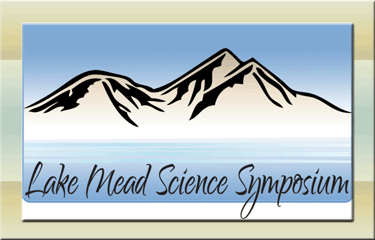Location
UNLV Student Union
Start Date
13-1-2009 8:00 AM
End Date
14-1-2009 6:00 PM
Description
The Lake Mead National Recreation Area incorporates 1.5 million acres, including Lake Mead and Lake Mohave. The abundance of recreational activities on Lakes Mead and Mohave can impact the contaminant levels in the water, potentially affecting the health of individuals in contact with the water. The purpose of this study was to review and synthesize information obtained for projects conducted by partner agencies from the Water 2025 Conservation Initiatives, specifically bacterial concentration in high-use areas. Surface water samples were collected between May and September, at 9 high-use sites from 2003 to 2007. Culture analysis was performed to determine the concentration of fecal coliforms, enterococci, fecal streptococci, and Escherichia coli. Test results of 324 water samples analyzed for E. coli showed only one instance of a concentration higher than the acceptable limit. Enterococci concentrations above the acceptable limit were found in 13% of the 165 samples. In addition, 9% of 317 samples exceeded the acceptable limit for fecal streptococci, and fecal coliforms were present in concentrations above the acceptable limit in 3% of the 324 samples analyzed. Throughout the five-year study, three sites, Middle Point Cove, Boxcar Cove, and 6-Mile Cove, were identified as those with the highest frequency of unacceptable levels of the indicator organisms monitored. The results of this study will be used to address the technical soundness of monitoring at the Lake Mead National Recreation Area, and will identify management recommendations to the National Park Service.
Keywords
Bacterial pollution of water; Enterobacteriaceae; Enterococcus; Escherichia coli; United States – Lake Mead National Recreation Area; Water – Pollution
Disciplines
Environmental Health and Protection | Environmental Monitoring | Fresh Water Studies | Water Resource Management
Language
English
Included in
Environmental Health and Protection Commons, Environmental Monitoring Commons, Fresh Water Studies Commons, Water Resource Management Commons
Surface water monitoring for fecal indicator bacteria in high-use sites of the Lake Mead National Recreation Area
UNLV Student Union
The Lake Mead National Recreation Area incorporates 1.5 million acres, including Lake Mead and Lake Mohave. The abundance of recreational activities on Lakes Mead and Mohave can impact the contaminant levels in the water, potentially affecting the health of individuals in contact with the water. The purpose of this study was to review and synthesize information obtained for projects conducted by partner agencies from the Water 2025 Conservation Initiatives, specifically bacterial concentration in high-use areas. Surface water samples were collected between May and September, at 9 high-use sites from 2003 to 2007. Culture analysis was performed to determine the concentration of fecal coliforms, enterococci, fecal streptococci, and Escherichia coli. Test results of 324 water samples analyzed for E. coli showed only one instance of a concentration higher than the acceptable limit. Enterococci concentrations above the acceptable limit were found in 13% of the 165 samples. In addition, 9% of 317 samples exceeded the acceptable limit for fecal streptococci, and fecal coliforms were present in concentrations above the acceptable limit in 3% of the 324 samples analyzed. Throughout the five-year study, three sites, Middle Point Cove, Boxcar Cove, and 6-Mile Cove, were identified as those with the highest frequency of unacceptable levels of the indicator organisms monitored. The results of this study will be used to address the technical soundness of monitoring at the Lake Mead National Recreation Area, and will identify management recommendations to the National Park Service.

Comments
File: Poster